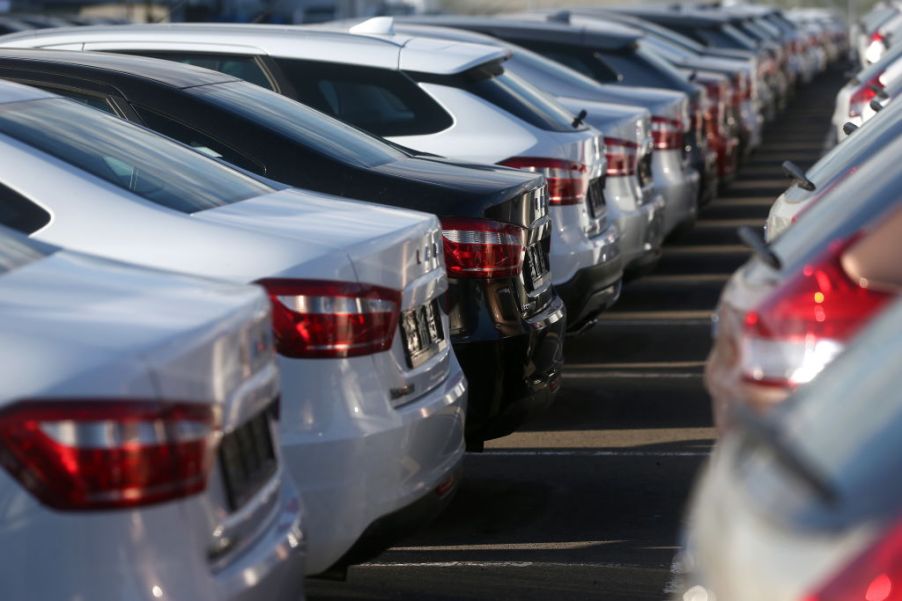
Here Are America’s Most and Least Popular Car Colors for 2019
If you guessed that some shade of gray was the most popular car color in America for 2019, then you’re wrong but you’re definitely getting warm.
Give up?
According to a study by iSeeCars, the answer is white.
The study examined 9.4 million vehicles on the road in 2019, ranging from 2014 to 2018 model years, to find the market share of each color. White topped the popularity chart at 23.9%, followed immediately by black, at 23.2%. Honorable mentions go to gray and silver at 15.5% and 14.5%, respectively.
Which car colors did Americans opt for the least in 2019?

America’s least popular car colors for 2019 were gold at 0.3%, followed by yellow at 0.2%, and ending with purple at a paltry 0.1%.
If you observe the vehicles around you during your daily drive, then the results of this study shouldn’t come as a huge surprise.
Still, you’re probably wondering why Americans flocked to certain car colors and steered clear of other hues in 2019.
There are a few interesting theories as to what drives consumers’ car color preference in the United States. Here are a few of the most common possible explanations:
Car colors reflect our obsession with tech

Some suggest that our fascination with technology is reflected in our preference for car colors.
Most consumer electronics are finished in brushed chrome, matte gray, glossy black, or white hues—the same trend can be observed in our vehicle color preference for the past few years.
Are we really subconsciously gravitating toward hues that would nicely complement our spiffy new smartphones?
So goes this theory, but there’s other possible explanations for our nation’s affinity for neutral-colored cars.
The Great Recession effect

The recent recession that stuck in the late 2000s and early 2010s forced most Americans to be conservative with their money and avoid taking any unnecessary risks. Consumers tended to play it safe when it came to extravagant purchases, and this conservatism also applied to their color choice for new vehicles.
A similar consumer trend happened after the Great Depression of 1929—the fortunate few Americans who could afford a new car opted to have it painted in subdued shades of gray and green; this trend continued until the prosperity that followed after World War II came to a close.
Supporters of the Great Recession car color theory also contend that America’s taste for more vivacious hues will increase as the economy continues to grow, but only time will tell.
Speaking of economic prosperity, another common theory as to why Americans fancy neutral-colored vehicles is that these hues are associated with prestige and opulence.
Neutral colors are associated with status and wealth

Neutral colors like silver, white, and black have long been linked with luxury and elite social status in America and other nations across the globe.
Conservative colors are elegantly simple and convey a sense of opulence without being gaudy or loud. Neutral colors can be found on a dizzying assortment of luxury goods, from fine jewelry and watches to virtually every luxury car.
It only stands to logic that many Americans would want to their vehicle’s paint to project this image of wealth, status, and success
Others argue that low-key car colors like gray, black, and white are all the rage for a decidedly more practical reason.
Neutral colors are easier to clean

Simply put, neutral cars—especially silver or gray hues—are easier to keep clean because they show less dirt, dust, grime, water spots, and other nasty contaminants cars collect while driving. These modest colors also don’t show scratches, chips, and other paint damage as readily as brighter colors do.
It would make sense that Americans would want a color on their ride that requires less work to make it look nice and presentable.
The only exception to this rule are black vehicles. Black can make a car look sinister, stealthy, and super posh, but it also shows dust, scratches, and swirl marks like you wouldn’t believe—a fact that anyone who’s owned a black vehicle can verify.
So which colors are trending for 2020?

So far, neutral colors are still the most popular paint options for new cars in 2020.
However, if you’re clamoring for vivid vehicle paint options, then you’ll be pleased to hear that hues like green, blue, and red are rapidly gaining popularity. The same goes for daring neon shades.
Manufacturers are also offering more two-toned roof options to add some visual pizazz to otherwise modest-looking vehicles.
Regardless of your paint preference, more consumer choice is always a good thing, so bring on the screaming Skittles colors!


